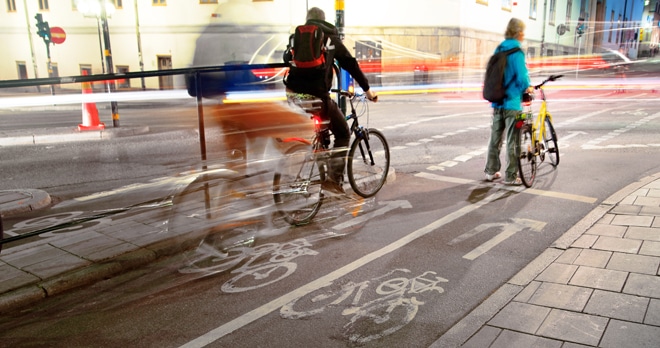The unexpected impact of COVID-19 on mobility for the disabled

The COVID-19 pandemic, and subsequent lockdown, has led to huge change in the way we live our lives.
No-one would have wished for a global pandemic to kick-start change, given the devastating impact it has had across the world, but it is worth considering some of the positive effects that people have discovered as many countries have been forced to slow down and take stock.
One of the positives of the lockdown has been the impact upon how people get around. Cyclists and pedestrians across the UK found they had more space in which to travel, as fewer people used their cars for work and leisure.
This change has led the Government and local authorities to take decisive action to encourage a reduction in traffic as well as encouraging more active travel - and it appears to have worked with bikes selling out across the country in June.
Whilst the positive impact upon public health, through people taking on a more active lifestyle and being exposed to less air pollution, is very much welcomed, do the infrastructure changes take into account all sectors of the population?
How changes to urban centres are impacting on people living with disabilities
As councils have had to rapidly adapt road infrastructure during lockdown, disability rights campaigners have been keen to stress that any changes should bring everyone with them and not just those who are able to walk and cycle.
Many on social media have highlighted the issues that wheelchair users face when navigating temporary road layouts, in the hope that local authorities consider accessibility whilst they also try and improve the level of active travel in towns and cities across the UK.
In June, Transport For All highlighted a number of key concerns they have as local authorities consider more permanent changes to road layouts. These include:
- pavements cluttered with hired bikes or charging points, which could be difficult for wheelchair users to navigate or confusing and overwhelming for people who are neurodiverse;
- a lack of dropped curbs, which render entire pavements no-go zones for wheelchair users;
- car-free zones and low-traffic neighbourhoods which could leave certain areas inaccessible for those who rely on cars as their mode of transport - an issue that caused much concern in Oxford, for example.
Is the Government addressing these concerns?
Following the release of, and subsequent updates to, the Government’s guidance on changes to public spaces after COVID-19, those who are living with a disability are right to have concerns about how changes will be implemented. The guidance (at the time of writing) makes little mention of the potential impact on disabled people outside of saying that “security considerations and the impact on disabled people and others with additional needs will be kept under consideration and may call for a balanced approach”.
As a Trusted Legal Partner to Spinal Injuries Association (SIA), we work closely with many people whose lives have been impacted by spinal cord injury. Much like Transport for All, SIA campaigns for accessibility for those whose mobility may be limited following a spinal cord injury. Even before COVID-19 they opened up consultation on accessibility in train stations, and have more recently worked with an architectural firm to develop kits for individuals to build their ideal and accessible lockdown town (or #LockTown).
Carol Barraclough, a Support Network Coordinator at SIA, said:
"Many of our service users are reporting concerns about access around the country. Some are seeing disabled parking spaces being blocked off to accommodate pedestrian queues or additional spaced parking, whilst others have issues with access to outside spaces such as kissing gates and styles. We urge everyone to help us where they can make a change. Those with an SCI should not have their liberties restricted by others unnecessarily. We can all make a difference, and should."
We know the difficulties that wheelchair users and those with generally impaired mobility, experience in their day-to-day lives, and sincerely hope that local authorities and our Government make a real commitment to ensuring that any changes don’t leave anyone behind. We would encourage everyone to try and support campaigns like Transport for All and other individual disability campaigners, in order to help raise awareness of the problems that people with mobility issues face.